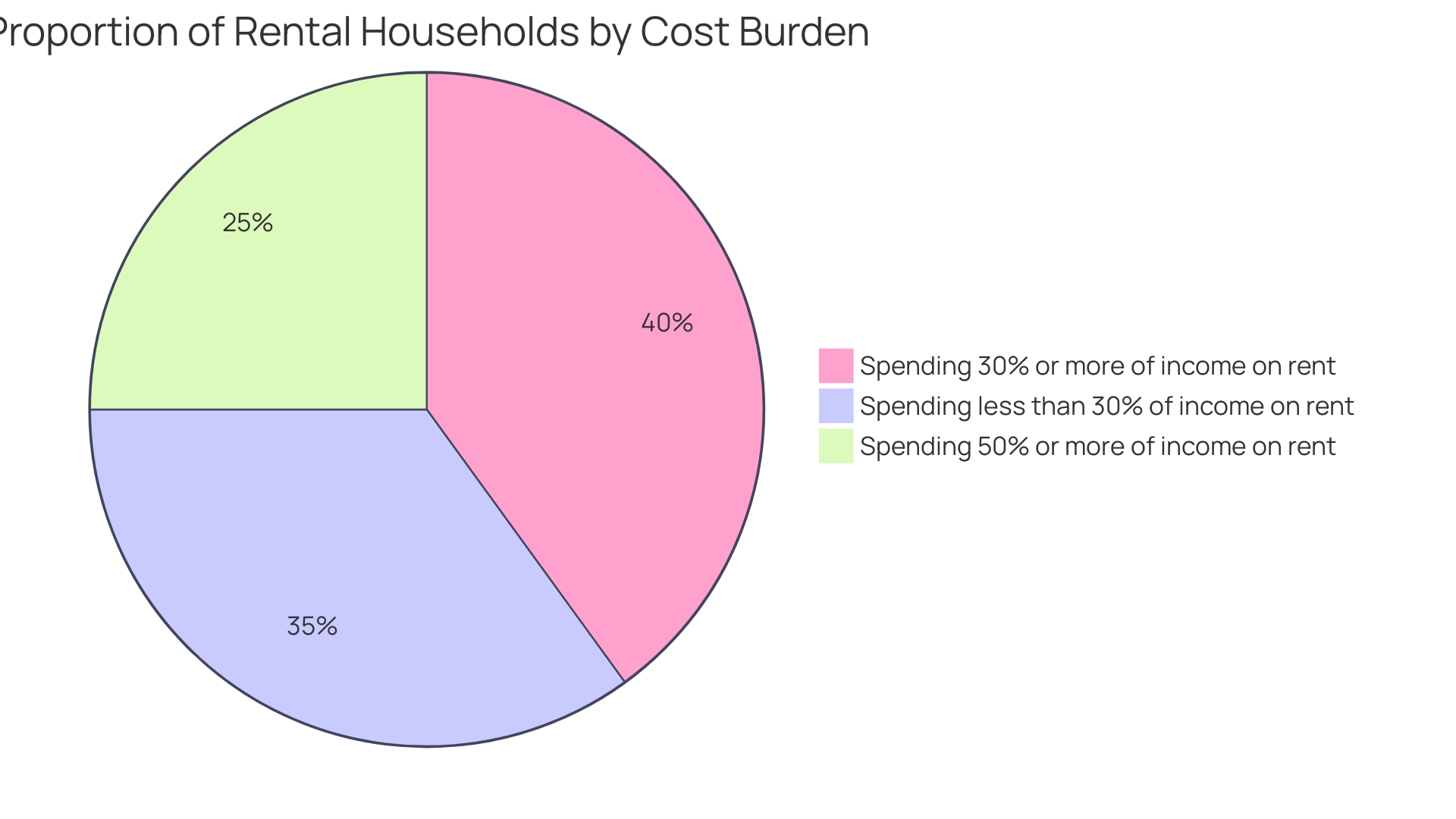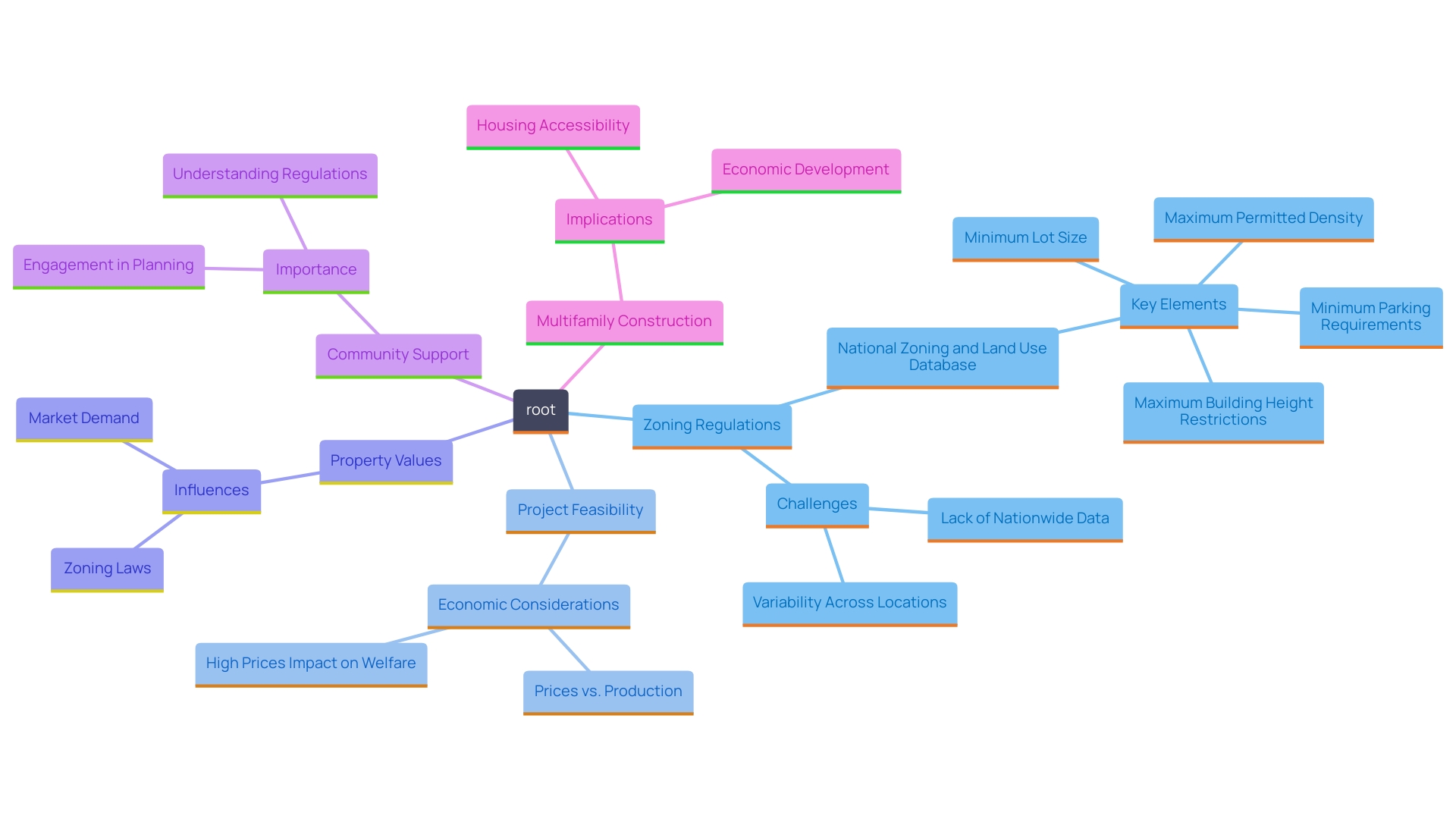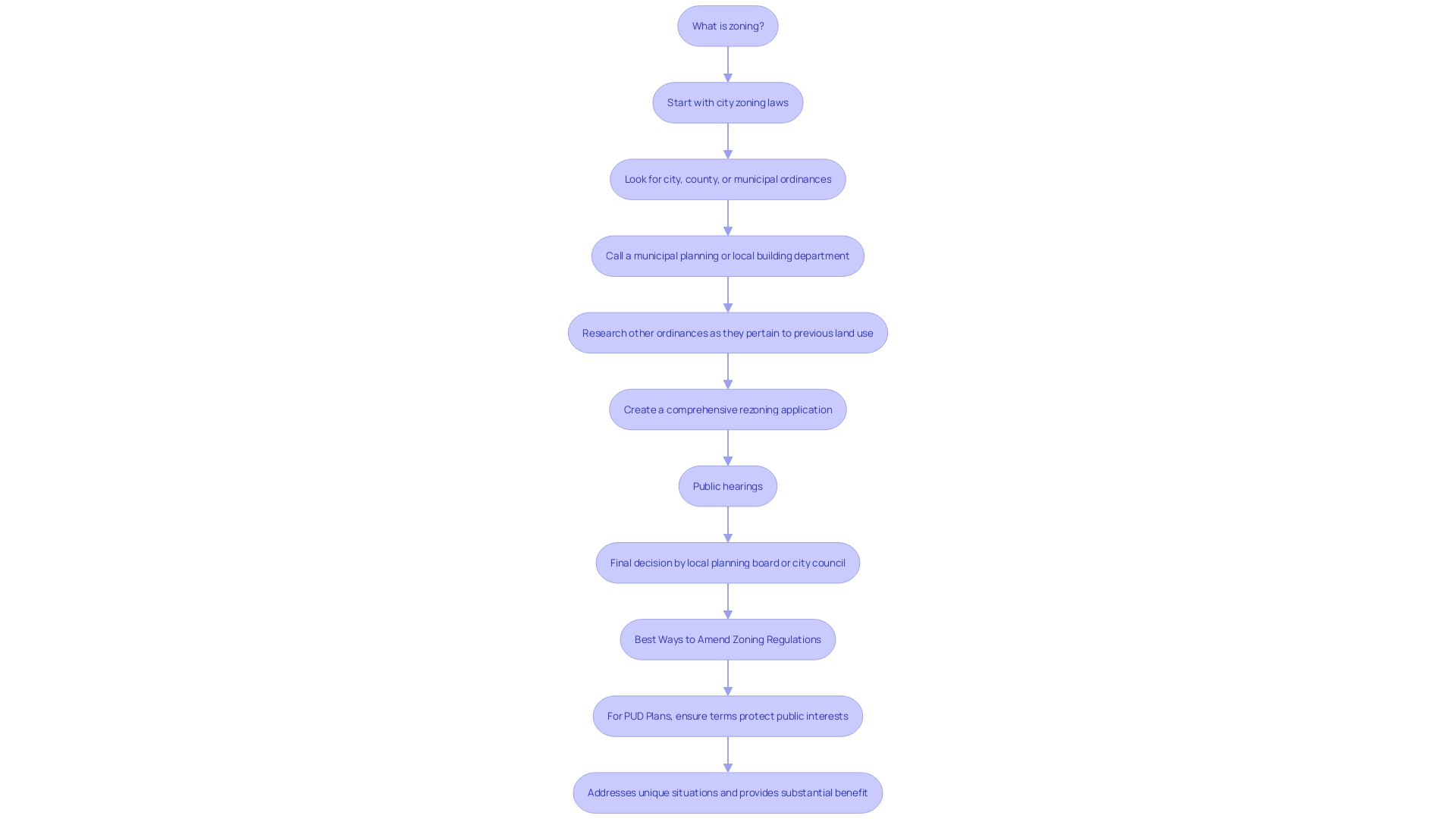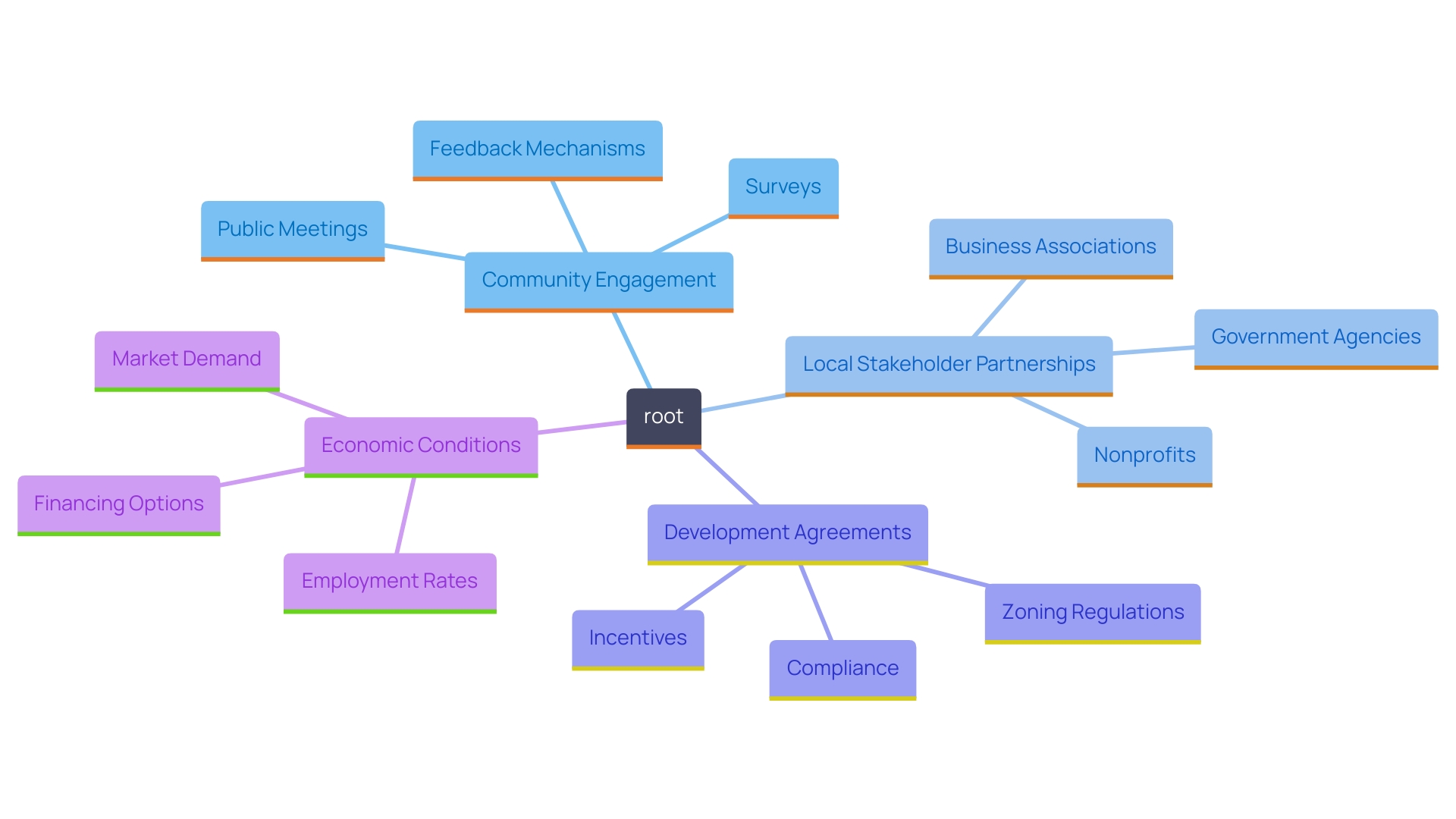Introduction
Understanding local zoning laws and regulations is essential for anyone involved in land use and development, particularly in multifamily housing projects. These laws, established by local governments, dictate how land can be used, categorizing it into various zones—residential, commercial, industrial, and agricultural—each with specific rules governing permitted activities. The implications of these regulations extend beyond compliance; they significantly influence project feasibility, community acceptance, and ultimately, the financial success of developments.
With the ongoing housing affordability crisis highlighting the limitations of existing zoning practices, recent initiatives aim to reform these regulations to better accommodate diverse housing needs. This article delves into the intricacies of zoning laws, the critical role they play in multifamily development, the process of rezoning properties, and strategies to overcome community objections, providing a comprehensive overview for stakeholders navigating this complex landscape.
Understanding Local Zoning Laws and Regulations
Zoning laws serve as critical regulatory frameworks established by local governments to dictate land use. These regulations categorize land into various zones—such as residential, commercial, industrial, and agricultural—each with specific permitted activities. For developers, particularly those focused on multifamily housing initiatives, a thorough grasp of these land-use regulations is essential. They establish the kinds of constructions that can be created, the density of growth, and the overall design criteria that must be followed.
Key elements of land use regulations include setbacks, which dictate how far structures must be placed from property lines; height restrictions, which limit the vertical scale of buildings; and density limits, which regulate the number of units allowed per area. These factors can significantly influence the feasibility and attractiveness of multifamily projects.
Recent developments highlight the pressing need for reform in land use practices nationwide. 'According to a 2021 paper by Bronin, the concept of a National Land Use Atlas aims to address the fragmented and often restrictive nature of current land-use regulations.'. 'This project involves collaboration among over 20 teams across 24 states, striving to streamline terminology related to land use and enhance accessibility to information about land use.'. By outlining land use codes, the atlas aims to demonstrate the impacts of these regulations on accommodation availability and affordability.
The urgency of such reforms is underscored by alarming statistics from the U.S. Census Bureau: approximately 21.8 million households are spending at least 30 percent of their income on rent, with 11.2 million spending over 50 percent. This translates to nearly 48 percent of all rental households being classified as cost-burdened. 'With the ongoing housing affordability crisis worsened by elevated interest rates and the rising expenses linked to homeownership—averaging $3,000 monthly for a median-priced residence—effective land-use reform is more essential than ever in promoting fair housing solutions.'.

Why Zoning Matters in Multifamily Development
Zoning plays a crucial role in the viability of multifamily construction, significantly impacting both project feasibility and potential profitability. By creating particular land use regulations, land management assists in expediting the approval process, guaranteeing that suggested developments conform to local standards and urban planning objectives. This alignment is crucial, as it helps encourage community support and reduces the risk of legal disputes that can arise from non-compliance with land use regulations.
'The impact of land-use planning extends beyond the regulatory framework; it also affects property values and the marketability of multifamily units.'. For instance, a well-zoned area can enhance the appeal of a development, potentially leading to higher rental rates and increased investor interest. According to the National Land Use and Planning Database, over 2,600 municipalities in the U.S. enforce various codes that dictate land use, ranging from minimum lot sizes to maximum building heights. These codes are essential for developers to understand, as they can greatly influence the financial viability of a project.
Moreover, recent conversations among decision-makers suggest a transition towards zoning changes intended to enhance access to accommodations and tackle urgent affordability challenges. Events featuring specialists from different areas, like Oregon and Texas, highlight the significance of upzoning and its capacity to allow a wider variety of residential types beyond single-family homes. Such reforms are increasingly viewed as essential measures to develop sustainable living arrangements and boost economic development in neighborhoods.
By following land use regulations, developers not only protect their investments but also assist in wider initiatives focused on improving housing accessibility and fairness. The development of land-use practices demonstrates an increasing awareness of the necessity for flexible systems that can adjust to shifting market conditions and societal requirements.

Steps to Rezone a Property for Multifamily Use
'Changing the classification of a property is a multifaceted process that begins with a comprehensive evaluation of the existing regulations and their compatibility with proposed multifamily developments.'. Developers must create a comprehensive rezoning application that includes architectural plans, justifications for the zoning change, and evaluations of local impact. This application often requires an in-depth analysis of how the new use aligns with local planning goals and the needs of the community.
Public hearings play a crucial role in the rezoning process, providing a platform for various stakeholders—including residents, business owners, and local officials—to express their views and concerns. These forums not only facilitate transparency but also allow for constructive dialogue, which can be instrumental in refining development proposals.
The final determination concerning the rezoning request rests with the local planning board or city council. They must weigh the application’s merits against community objectives and planning guidelines. For example, recent trends show that many municipalities are reevaluating outdated land-use regulations that obstruct the development of mid-density dwellings, especially in reaction to the escalating affordability crisis. A national survey by SPUR highlighted that over 40 programs are actively encouraging the creation of residences for middle-income households, emphasizing the need for flexibility in land-use regulations to accommodate diverse types of dwellings.
Multiple case analyses demonstrate how effective regulatory changes can improve the availability of residences. For example, planners in Montgomery County have proposed modifications that would allow for the construction of duplexes, triplexes, and townhouses in areas traditionally reserved for single-family homes. These recommendations were developed after extensive public involvement, highlighting the emerging consensus on the need for diverse housing options that maintain neighborhood character while addressing the housing shortage.
As Brian J. Connolly, a noted expert in land use law, asserts, successful execution of regulatory reforms often requires overcoming legal challenges. 'His research highlights the significance of strategic advocacy in navigating the complexities of local regulations to achieve planning goals that benefit the community at large.'. This evolving landscape of zoning practices reflects the urgent need to adapt to contemporary housing demands while fostering sustainable urban growth.

Common Challenges and Strategies for Overcoming Objections
Navigating the complexities of rezoning land for multifamily use can be fraught with challenges, particularly from local residents who may oppose such developments due to concerns over increased traffic and environmental impacts. Developers can significantly enhance their chances of success by proactively engaging with the public from the outset. This engagement not only addresses local concerns transparently but also allows for the incorporation of public feedback into project plans, thereby fostering a sense of ownership and collaboration.
Building strategic partnerships with local stakeholders is essential. This collaborative approach can mitigate resistance and foster local support. For example, project agreements can be a powerful instrument, as they set forth clear guidelines, regulations, and conditions for an initiative in return for public benefits, ensuring that local interests are considered. Such agreements can help safeguard the growth from future zoning alterations or other regulatory obstacles, providing a stable framework that benefits both developers and the local population.
Experts note that the current economic climate presents unique challenges and opportunities for mixed-use projects. Rising costs have led to a decrease or flattening in rents, making it crucial for developers to adapt their strategies. By illustrating how a multifamily project can boost local enterprises and contribute positively to the social structure, builders can transform possible resistance into backing. As noted by industry experts, effective urban planning can improve living conditions and address many challenges exacerbated by poor land-use decisions. Therefore, engaging thoughtfully with the community and leveraging development agreements can pave the way for successful multifamily developments that are welcomed rather than resisted.

Conclusion
The complexities of local zoning laws and their impact on multifamily housing development are paramount in the current landscape of land use regulation. Zoning laws dictate the permissible uses of land, influencing everything from project feasibility to community acceptance. As highlighted, understanding these regulations is crucial for developers, as they not only determine the types of structures that can be built but also the density and overall design parameters.
The ongoing discussions surrounding zoning reform underscore the urgent need to address housing affordability and availability, particularly in light of the significant number of households facing cost burdens.
The role of zoning extends beyond compliance; it is integral to the financial viability and marketability of multifamily projects. Properly aligned zoning can enhance property values and attract investor interest, while reform initiatives aim to create more inclusive housing solutions. The shift towards upzoning and the development of diverse housing types signifies a growing recognition of the need for adaptable zoning frameworks that respond to changing community needs and market dynamics.
Navigating the rezoning process involves a strategic approach, emphasizing community engagement and transparent communication. By proactively addressing local concerns and fostering partnerships with stakeholders, developers can build support for their projects. This collaborative effort not only mitigates opposition but also cultivates a sense of community ownership over developments.
As the housing landscape continues to evolve, the importance of effective zoning practices in promoting sustainable urban growth and enhancing housing accessibility cannot be overstated.




